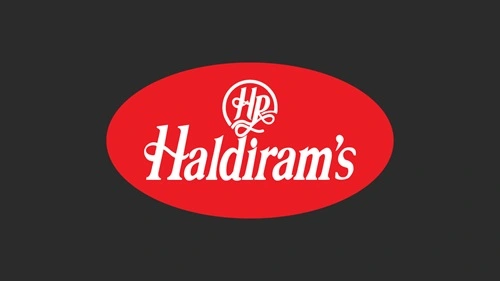Haldiram’s, one of India’s most beloved and recognized snack brands, has grown from a small shop in Bikaner, Rajasthan, to a dominant force in the Indian snack and packaged foods market. Founded in 1937, Haldiram’s has expanded its product portfolio over the years, including everything from traditional Indian snacks like namkeens and sweets to newer offerings like frozen foods and ready-to-eat meals. Known for its quality, authenticity, and variety, Haldiram’s has cultivated a loyal customer base, both in India and abroad. However, as the FMCG (Fast-Moving Consumer Goods) landscape becomes increasingly competitive with the entry of both local and international players, Haldiram’s faces a unique set of opportunities and challenges. This SWOT (Strengths, Weaknesses, Opportunities, Threats) analysis provides insights into Haldiram’s current position and future outlook in India’s evolving snack and packaged food industry.

Strengths
1. Strong Brand Equity and Consumer Trust:
Haldiram’s has established itself as a trusted and iconic brand in India, known for its authenticity, quality, and traditional flavors. The brand’s longstanding reputation has built strong consumer trust, particularly in the namkeen and mithai (sweet) segments. This trust and brand equity give Haldiram’s a competitive advantage, making it a go-to choice for Indian snacks, especially during festivals and special occasions.
2. Extensive Product Portfolio Catering to Diverse Tastes:
Haldiram’s offers a diverse product range that includes namkeens, sweets, ready-to-eat meals, frozen foods, and beverages. This extensive portfolio allows the brand to cater to a wide range of consumer preferences, spanning traditional Indian snacks and modern convenience foods. By continuously innovating and introducing new flavors, Haldiram’s keeps its product range fresh, appealing to both traditional and contemporary consumers.
3. Strong Distribution Network and Global Presence:
Haldiram’s has a well-established distribution network across India, with products available in general trade stores, modern retail outlets, and its own brand stores. Additionally, Haldiram’s has expanded its presence in international markets, particularly in regions with a large Indian diaspora, such as the United States, the Middle East, and the United Kingdom. This global reach has allowed Haldiram’s to build a strong presence beyond India, tapping into demand for authentic Indian snacks worldwide.
4. Vertical Integration and Control over Production Quality:
Haldiram’s operates with a high degree of vertical integration, with in-house manufacturing facilities that ensure quality control at every stage of production. This vertical integration helps Haldiram’s maintain consistent product quality, a crucial factor in the food industry. By controlling its manufacturing processes, Haldiram’s can also manage costs effectively, which is essential for pricing competitiveness.
Weaknesses
1. High Dependence on Traditional Products:
While Haldiram’s has successfully diversified into new product categories, it remains heavily reliant on its traditional snack items, such as bhujia, namkeens, and Indian sweets. This dependency could make Haldiram’s vulnerable to shifts in consumer preferences, particularly as younger, health-conscious consumers seek healthier snack options. Relying on traditional products limits Haldiram’s ability to capture new-age consumers focused on wellness and nutrition.
2. Limited Presence in the Health and Wellness Segment:
With rising health awareness, many consumers are increasingly looking for low-calorie, low-sugar, or organic snack options. Haldiram’s limited focus on the health and wellness segment restricts its ability to capture this high-growth market. Competitors like PepsiCo (through Kurkure and Lay’s) and newer brands such as Yoga Bar and The Green Snack Co. have introduced healthier alternatives, leaving Haldiram’s behind in this segment.
3. Complex Family Ownership Structure:
Haldiram’s ownership is divided among three family branches—Delhi, Nagpur, and Kolkata—each managing different territories and having its own production facilities and distribution channels. This fragmented ownership can lead to strategic misalignment, operational inefficiencies, and conflicts over expansion or branding decisions. Lack of centralized control may hinder Haldiram’s ability to make quick decisions and compete cohesively against other large FMCG brands.
4. Overdependence on Indian and Diaspora Markets:
While Haldiram’s has made inroads into international markets, much of its customer base remains concentrated in India and Indian diaspora communities abroad. This overdependence on the Indian market and diaspora demand limits Haldiram’s ability to diversify revenue streams across non-Indian consumers. Expanding its appeal to non-Indian consumers by introducing fusion or globally inspired products could be a challenge given its traditional brand image.
Opportunities
1. Expansion in the Health and Wellness Segment:
The increasing focus on health and wellness presents a significant growth opportunity for Haldiram’s. By developing products with lower calories, reduced sugar, or using natural ingredients, Haldiram’s can capture the growing segment of health-conscious consumers. Introducing “better-for-you” options, such as baked snacks, low-sodium variants, or organic products, could help Haldiram’s tap into a broader customer base and meet emerging demand for healthy snacking.
2. Growing Demand for Ready-to-Eat and Frozen Foods:
With busy urban lifestyles and an increase in dual-income households, the demand for convenient ready-to-eat and frozen foods is on the rise in India. Haldiram’s has already entered this segment with ready-to-eat curries, meals, and frozen items, but there is further room for growth. Expanding its product range in the ready-to-eat category and enhancing packaging and flavor options could help Haldiram’s cater to time-pressed urban consumers.
3. Leveraging E-commerce and Digital Channels:
E-commerce has seen tremendous growth in India, particularly for packaged food products, thanks to the rise of platforms like Amazon, BigBasket, and Flipkart. Expanding its online presence and direct-to-consumer (DTC) channels could help Haldiram’s reach a broader audience, especially younger consumers who prefer online shopping. Investing in digital marketing and e-commerce partnerships could increase brand visibility and drive online sales.
4. International Expansion Beyond Diaspora Markets:
While Haldiram’s has successfully catered to Indian communities abroad, there is a significant opportunity to expand its presence among non-Indian consumers by introducing globally appealing flavors and packaging. Collaborations with international retailers, strategic distribution partnerships, and targeted marketing efforts can help Haldiram’s grow in new markets and increase brand awareness beyond the Indian diaspora.
Threats
1. Intense Competition from Domestic and International Players:
Haldiram’s faces stiff competition from both local and international snack brands. Domestic players like Bikano, ITC’s Bingo, Balaji Wafers, and regional brands offer similar products, often at competitive prices. Additionally, global giants like PepsiCo (Lay’s, Kurkure) and Mondelez are expanding their portfolios to include Indian flavors and variants, intensifying competition. This crowded market requires Haldiram’s to continuously innovate and defend its market share.
2. Rising Costs of Raw Materials and Inflationary Pressures:
The food industry is highly sensitive to fluctuations in raw material costs, particularly for ingredients like oil, spices, flour, and sugar. Rising inflation and increased raw material costs can impact Haldiram’s profitability, particularly if the company is unable to pass these costs onto consumers. Efficient cost management and pricing strategies will be crucial for Haldiram’s to sustain profitability while keeping its products affordable.
3. Regulatory and Compliance Challenges:
The food and beverage industry in India is subject to stringent regulatory standards around food safety, labeling, and quality control. Compliance with these regulations can be complex and costly, particularly for a large-scale operation like Haldiram’s. Any lapses in compliance could lead to fines, product recalls, and reputational damage. Maintaining strict quality control and staying updated with changing regulations is essential to avoid regulatory risks.
4. Changing Consumer Preferences Towards Healthier Options:
As consumers become more health-conscious, demand for traditional fried snacks and sugary sweets may decline, particularly among younger, urban consumers. This shift in preference towards healthier options poses a risk to Haldiram’s core product lines. Competitors offering low-calorie, organic, or gluten-free alternatives could capture a portion of Haldiram’s market if the company does not adapt to these changing trends.
Haldiram’s Future Outlook
The future outlook for Haldiram’s is optimistic, backed by its strong brand equity, diverse product portfolio, and expanding distribution network. India’s snack and packaged food industry is poised for growth, driven by rising incomes, urbanization, and changing lifestyles, which creates significant opportunities for Haldiram’s to expand its market presence and diversify its offerings.
To leverage emerging trends, Haldiram’s should consider expanding its product portfolio in the health and wellness segment. By introducing products with natural ingredients, reduced fat, and no artificial additives, Haldiram’s can attract health-conscious consumers and align itself with global wellness trends. Additionally, focusing on eco-friendly packaging and transparent sourcing practices could strengthen its appeal to environmentally aware consumers.
Expanding its online presence and direct-to-consumer (DTC) channels will be essential to capture India’s digitally-savvy consumer base. By investing in e-commerce, social media marketing, and influencer collaborations, Haldiram’s can increase brand engagement and boost online sales. Establishing a robust online presence will also allow Haldiram’s to compete effectively with emerging digital-first snack brands.
Geographical expansion, particularly in Tier 2 and Tier 3 cities in India, presents another promising growth avenue. Targeted marketing campaigns, region-specific flavors, and pricing strategies tailored for these areas could help Haldiram’s reach new customers and strengthen its foothold in smaller towns.
To maintain competitiveness, Haldiram’s must address challenges posed by changing consumer preferences, rising costs, and regulatory compliance. Improving operational efficiencies, enhancing supply chain resilience, and closely monitoring quality control will be key to managing costs and sustaining profitability.
In conclusion, Haldiram’s strengths in brand trust, product variety, and distribution provide a solid foundation for continued growth. By embracing innovation, expanding its product offerings, and tapping into health-conscious trends, Haldiram’s can adapt to the evolving market landscape and secure its position as India’s leading snack brand. With a balanced approach to tradition, innovation, and customer satisfaction, Haldiram’s is well-positioned to navigate challenges and capture growth opportunities in India’s dynamic food industry.

